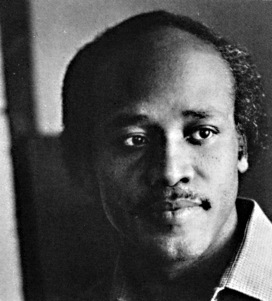
PEOPLE IN THE FIELD. 52” X 70”, OIL ON CANVAS
Mr. Placide began his formal training in Haiti. Enock’s earlier works are primarily watercolors. From the beginning, Haitian religious symbols and folk life have been predominate themes in his work. All of his work is, however, of the classical romantic mode.
(Medgar Evers College. (19–). The Medgar Evers College art collection. Brooklyn, NY: MEC)
Some of the most outstanding and ambitious pieces are by Enock Placide, the one painter here who explores illusionistic as well as flat space. In large examples like ”Mountaineers” and ”Market Place No. 2,” he combines delicate strokes and soft, nicely orchestrated tonalities with a sun-drenched white light.
In more complex, multi-unit paintings, Mr. Placide proves he can also star in a more visionary role. These are very original works that interweave spiritual, historical and symbolic imagery and seem to blend the characteristics of mural art with the best aspects of spiritualism. (Source)

Woman in the Woods
After Enock Placide’s painting
When I first saw her
I was young enough to believe
the artist erased her face on purpose
a cloth taken to still-wet canvas
brown acrylic smudged gently
erasing her smile
Laughter caught mid air
I imagined where he began
Her dark eyes, doorway to her soul
Was this knowing woman being swallowed whole
by muslin balled up tightly
floating above dappled, muted greens and
browns of the forest in this painting?
Or was her breath snatched away
with a quick wipe of sponge?
Did her nose leave her face the same way?
Or was she in the act of seeking the flowery
pink bursting spores exploding on canvas?
Placide, the Haitian visionary
whispered in moods shifting
between the faceless woman and I
As I grew older, even though still faceless, this
woman in white speaks to me of futures and pasts
Seeks my counsel as the soggy floor on which I stand
disappears, sending me into a downward spiral
until I land at the beginning of my thoughts
once again allowing myself to be led there
where the question of erasure comes and goes
Trusting that, even without a face
she knows what she saw. (Source)

